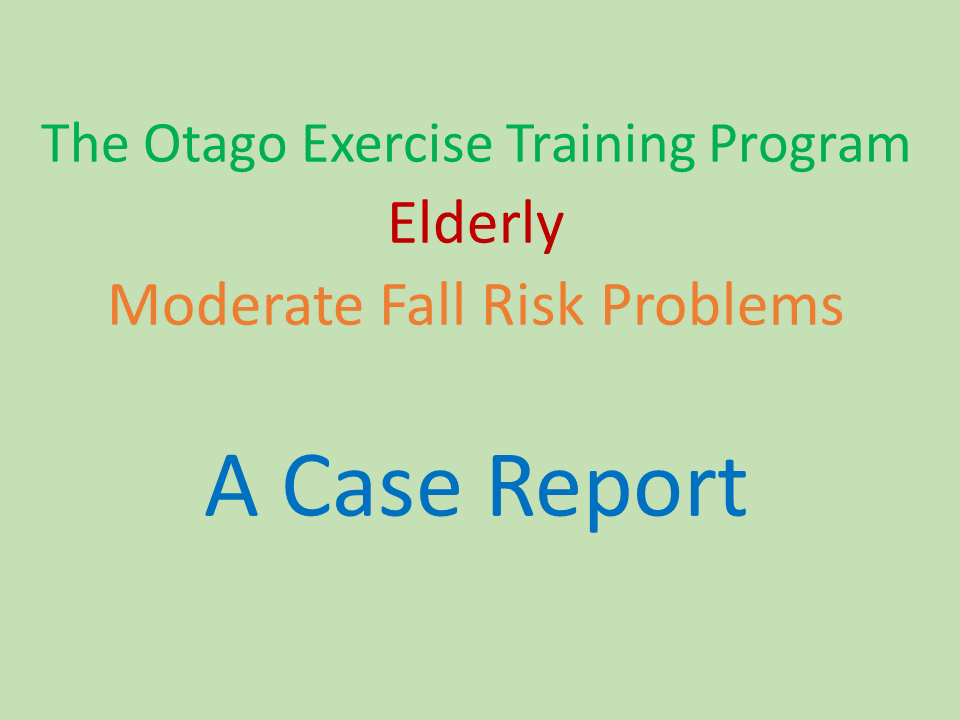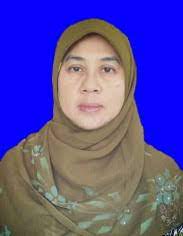The Otago Exercise Training Program For Patients With Moderate Fall Risk Problems : A Case Report
DOI:
https://doi.org/10.23917/bik.v17i1.1942Keywords:
balance, elderly, Otago exercise, fall prevention, risk of fallAbstract
The elderly are a vulnerable group because they have experienced various setbacks. Degenerative disorders are physiological processes that occur in the elderly, one that often occurs is a decrease in the function of the musculoskeletal system such as complaints of joint pain, decreased muscle strength, and decreased balance which can cause the risk of falling. The management that can be done to prevent falls while minimizing side effects is by using non-pharmacological therapies, one of which is by doing the Otago Exercise. The purpose of this case study is to explain how the effect of Otago Exercise is to prevent the risk of falling in the elderly. The writing method used in this study is to use a case study conducted on the elderly Mrs. S. The results of nursing care after carrying out the Otago Exercise Program showed an increase in the risk of falling in the elderly from 32 to 39. This Otago Exercise has been proven to be effective and can be done to prevent the risk of falling in the. The elderly can implement the Otago Exercise Program on an ongoing basis accompanied by officers at the orphanage to prevent falls and maintain a balance so that joint function and posture remain good.
Downloads
References
Andarmoyo, S. (2013). Konsep & proses keperawatan nyeri. http://eprints.umpo.ac.id/2040
Aprilia, D., Al Jihad, M. N., & Aisah, S. (2023). Penerapan Balance Exercise untuk Menurunkan Resiko Jatuh pada Lansia. Holistic Nursing Care Approach, 3(1), 17. https://doi.org/10.26714/hnca.v3i1.10405
Badan Pusat Statistik. (2021). Statistik Penduduk Lanjut Usia 2021. https://www.bps.go.id/publication/2021/12/21/c3fd9f27372f6ddcf7462006/statistik-penduduk-lanjut-usia-2021.html
Davis, J. C., Hsu, C. L., Barha, C., Jehu, D. A., Chan, P., Ghag, C., Jacova, P., Adjetey, C., Dian, L., Parmar, N., Madden, K., & Liu-Ambrose, T. (2022). Comparing the cost-effectiveness of the Otago Exercise Programme among older women and men: A secondary analysis of a randomized controlled trial. PLoS ONE, 17(4 April), 1–14. https://doi.org/10.1371/journal.pone.0267247
Djoar, R. K., & Anggarani, A. P. M. (2021). Geriatri 2 (P. Asadini (ed.)). Syiah Kuala University Press.
Firmansyah, D., & Suprayitno, E. (2018). Pengaruh Latihan Gerak Sendi Lutut Terhadap Nyeri Sendi Lutut Pada Lansia Yang Mengalami Osteoathritis di Wilayah Kerja Puskesmas Pengasih 1 Kulon Progo Yogyakarta. Universitas Aisyiyah Yogyakarta, 4–16. http://digilib.unisayogya.ac.id/4322/1/NASPUB_DEDI FIRMANSYAH_201410201017.pdf
Hannan, M., Suprayitno, E., & Yuliyana, H. (2019). Pengaruh Terapi Kompres Hangat Terhadap Penurunan Nyeri Sendi Osteoarthritis Pada Lansia Di Posyandu Lansia Puskesmas Pandian Sumenep. Wiraraja Medika, 9(1), 1–10. https://doi.org/10.24929/fik.v9i1.689
Jahanpeyma, P., Kayhan Koçak, F. Ö., Yıldırım, Y., Şahin, S., & Şenuzun Aykar, F. (2021). Effects of the Otago exercise program on falls, balance, and physical performance in older nursing home residents with high fall risk: a randomized controlled trial. European Geriatric Medicine, 12(1), 107–115. https://doi.org/10.1007/s41999-020-00403-1
Jehaman, I., Asiyah, N., Berampu, S., & Siahaan, T. (2021). Pengaruh Otago Exercise Dan Gaze Stability Exercise Terhadap Keseimbangan Pada Lanjut Usia. Jurnal Keperawatan Dan Fisioterapi (Jkf), 4(1), 47–56. https://doi.org/10.35451/jkf.v4i1.823
Johnson, S. T., Anens, E., Johansson, A.-C., & Hellström, K. (2021). The Otago Exercise Program With or Without Motivational Interviewing for Community-Dwelling Older Adults: A 12-Month Follow-Up of a Randomized, Controlled Trial. Journal of Applied Gerontology, 40(3), 289–299. https://doi.org/10.1177/0733464820902652
Kamila, H. S., Maliya, A., & Kristini, P. (2023). The Effect of Music Therapy on Anxiety in Hemodialysis Patients with Kidney Failure: A Case Report. Jurnal Berita Ilmu Keperawatan, 16(1), 143–149. https://doi.org/10.23917/bik.v16i1.797
Kiik, S. M., Vanchapo, A. R., Elfrida, M. F., Nuwa, M. S., & Sakinah, S. (2020). Effectiveness of Otago Exercise on Health Status and Risk of Fall Among Elderly with Chronic Illness. Jurnal Keperawatan Indonesia, March. https://doi.org/10.7454/jki.v0i0.900
Lestari, S., Faridasari, I., Hikmat, R., Kurniasih, U., & Rohmah, A. (2022). Pengaruh Teknik Relaksasi Nafas Dalam Terhadap Skala Nyeri. 13(November 2021), 1–6. https://doi.org/10.38165/jk.v13i1.254
Martins, A. C., Santos, C., Silva, C., Baltazar, D., Moreira, J., & Tavares, N. (2018). Does modified Otago Exercise Program improve balance in older people? A systematic review. Preventive Medicine Reports, 11(June), 231–239. https://doi.org/10.1016/j.pmedr.2018.06.015
Nasri, & Widarti, R. (2020). Efektivitas Latihan The Otago Home Exercise Program Terhadap Keseimbangan pada Lansia. Physio Journal, 1(1).
Noorratri, E. D., Mei Leni, A. S., & Kardi, I. S. (2020). Deteksi Dini Resiko Jatuh Pada Lansia Di Posyandu Lansia Kentingan, Kecamatan Jebres, Surakarta. GEMASSIKA : Jurnal Pengabdian Kepada Masyarakat, 4(2), 128. https://doi.org/10.30787/gemassika.v4i2.636
Poveda-López, S., Montilla-Herrador, J., Gacto-Sánchez, M., Romero-Galisteo, R. P., & Lillo-Navarro, C. (2022). Wishes and perceptions about exercise programs in exercising institutionalized older adults living in long-term care institutions: A qualitative study. Geriatric Nursing, 43, 167–174. https://doi.org/10.1016/j.gerinurse.2021.11.013
PPNI. (2017). Standar Diagnosis Keperawatan Indonesia. Dewan Pengurus Pusat.
Rostikasari, F., Wardhani, R., Fis, S., Riyanto, A., & KM, S. (2021). Pengaruh Pemberian Program Otago Exercise Terhadap Peningkatan Keseimbangan Pada Lansia: Narrative Review. http://digilib.unisayogya.ac.id/id/eprint/5678
Segita, R., Febriani, Y., & Adenikheir, A. (2021). Kajian Ilmiah Problema Kesehatan Pengaruh Pemberian Otago Exercise Programme Terhadap Keseimbangan Dinamis Pada Lansia. 6(2), 337–348.
Shubert, T. E., Goto, L. S., Smith, M. L., Jiang, L., Rudman, H., & Ory, M. G. (2017). The Otago exercise program: Innovative delivery models to maximize sustained outcomes for high risk, homebound older adults. Frontiers in Public Health, 5(MAR), 1–8. https://doi.org/10.3389/fpubh.2017.00054
Smeltzer, S., & Bare, B. (2002). Buku Ajar Keperawatan Medikal-Bedah (3rd ed.). EGC. https://scholar.google.com/scholar?hl=en&as_sdt=0%2C5&q=Buku+Ajar+Keperawatan+Medikal-Bedah+Smeltzer+%26+Bare+&btnG=
Thakkar, S., Muhammad, T., & Srivastava, S. (2022). Cross-sectional associations of physical frailty with fall, multiple falls and fall-injury among older Indian adults: Findings from LASI, 2018. PLoS ONE, 17(8 August), 1–16. https://doi.org/10.1371/journal.pone.0272669
Waters, D. L., Popp, J., Herman, C., Ghahate, D., Bobelu, J., Pankratz, V. S., & Shah, V. O. (2022). The Otago Exercise Program compared to falls prevention education in Zuni elders: a randomized controlled trial. BMC Geriatrics, 22(1), 1–12. https://doi.org/10.1186/s12877-022-03335-6
World Health Organization. (2008). WHO Global Report on Falls Prevention in Older Age. Community Health, 53. http://www.who.int/ageing/publications/Falls_prevention7March.pdf
World Health Organization. (2022). Ageing and health. https://www.who.int/news-room/fact-sheets/detail/ageing-and-health
Zarah, M., & Djunawan, A. (2022). Upaya Pencegahan Risiko Pasien Jatuh Di Rawat Inap. Jurnal Kesehatan Masyarakat (Undip), 10(1), 43–49. https://doi.org/10.14710/jkm.v10i1.31625

Downloads
Submitted
Accepted
Published
How to Cite
Issue
Section
License
Copyright (c) 2024 Citra Windani Mambangsari, Siti Basiroh, Hartiah Haroen

This work is licensed under a Creative Commons Attribution 4.0 International License.


















